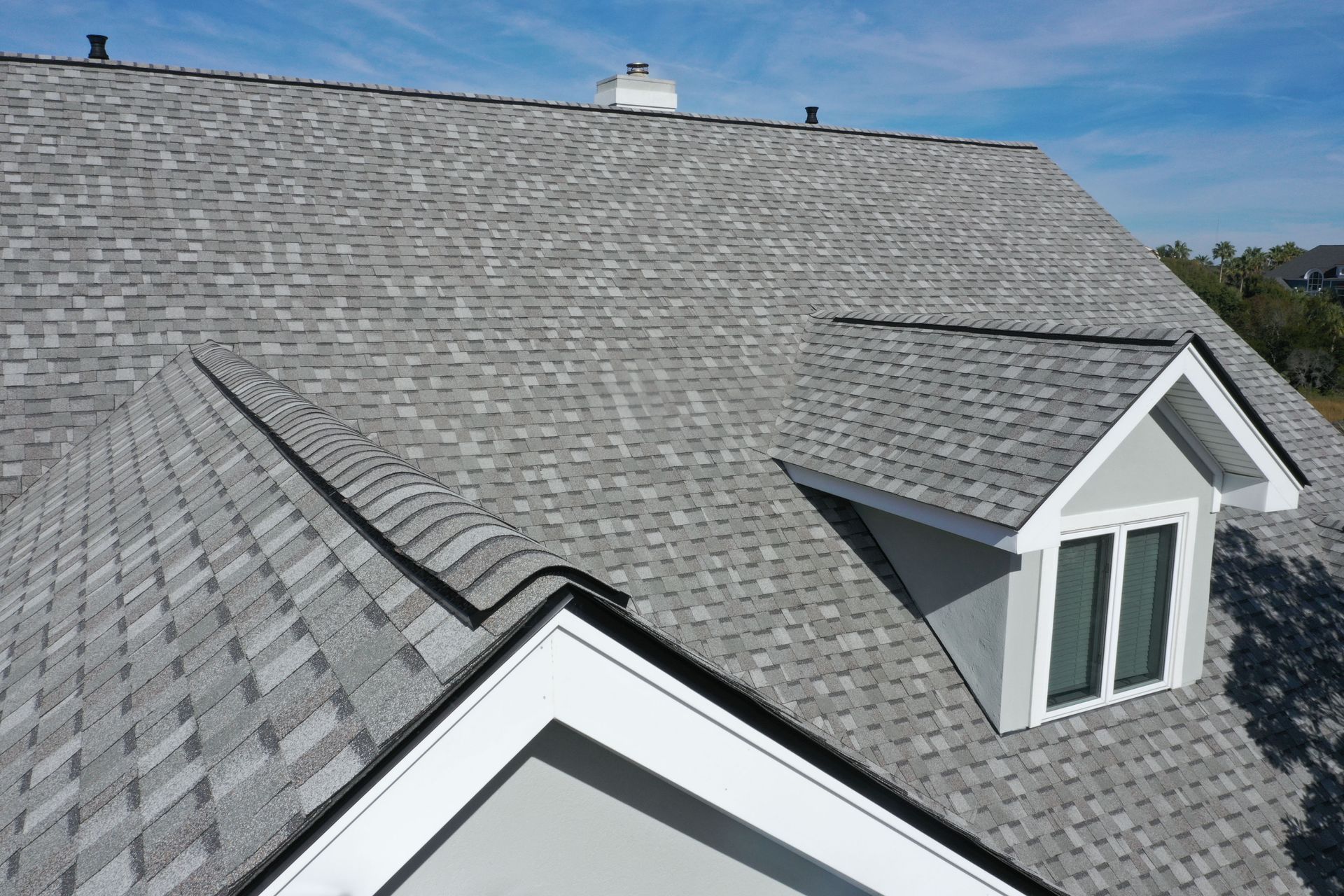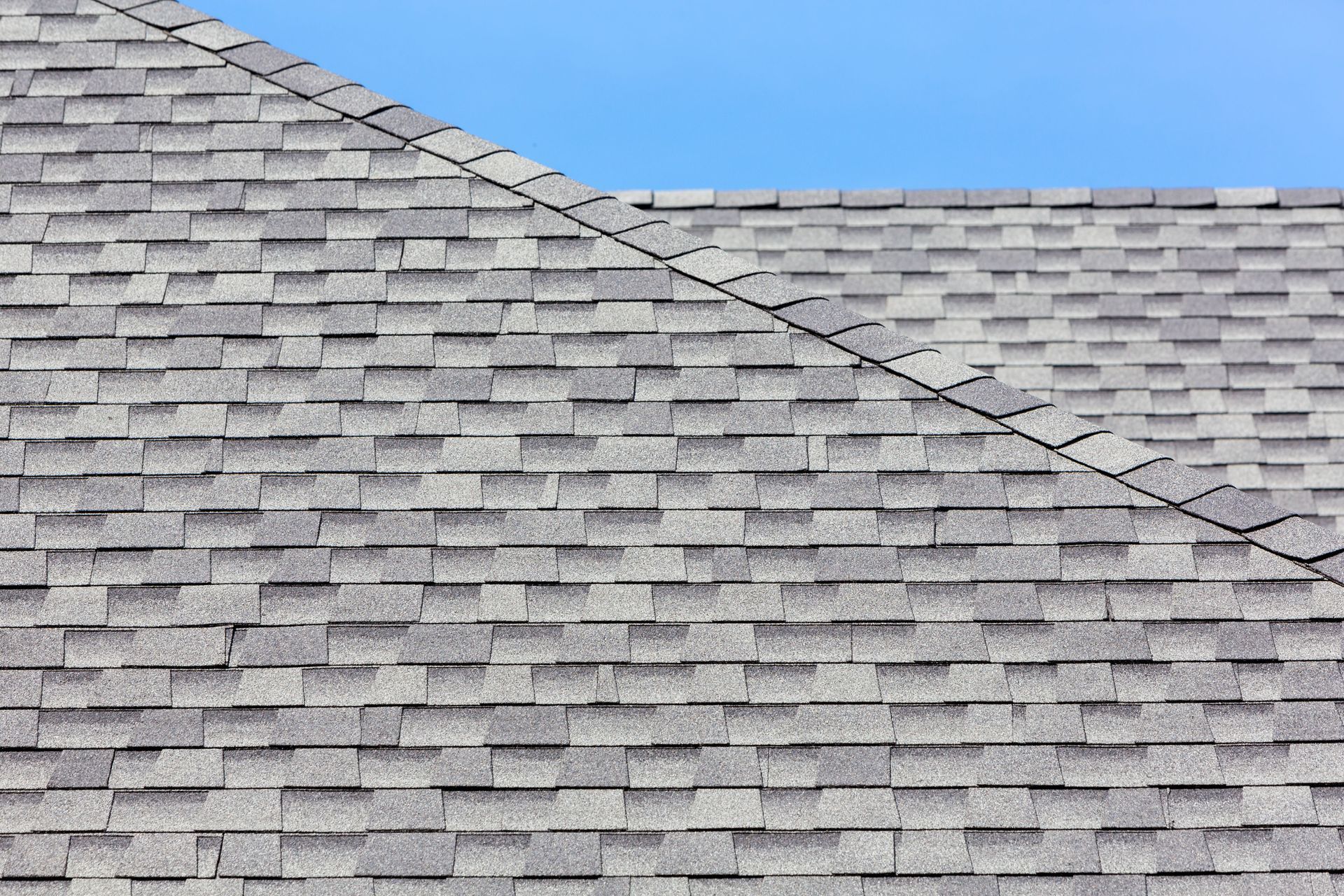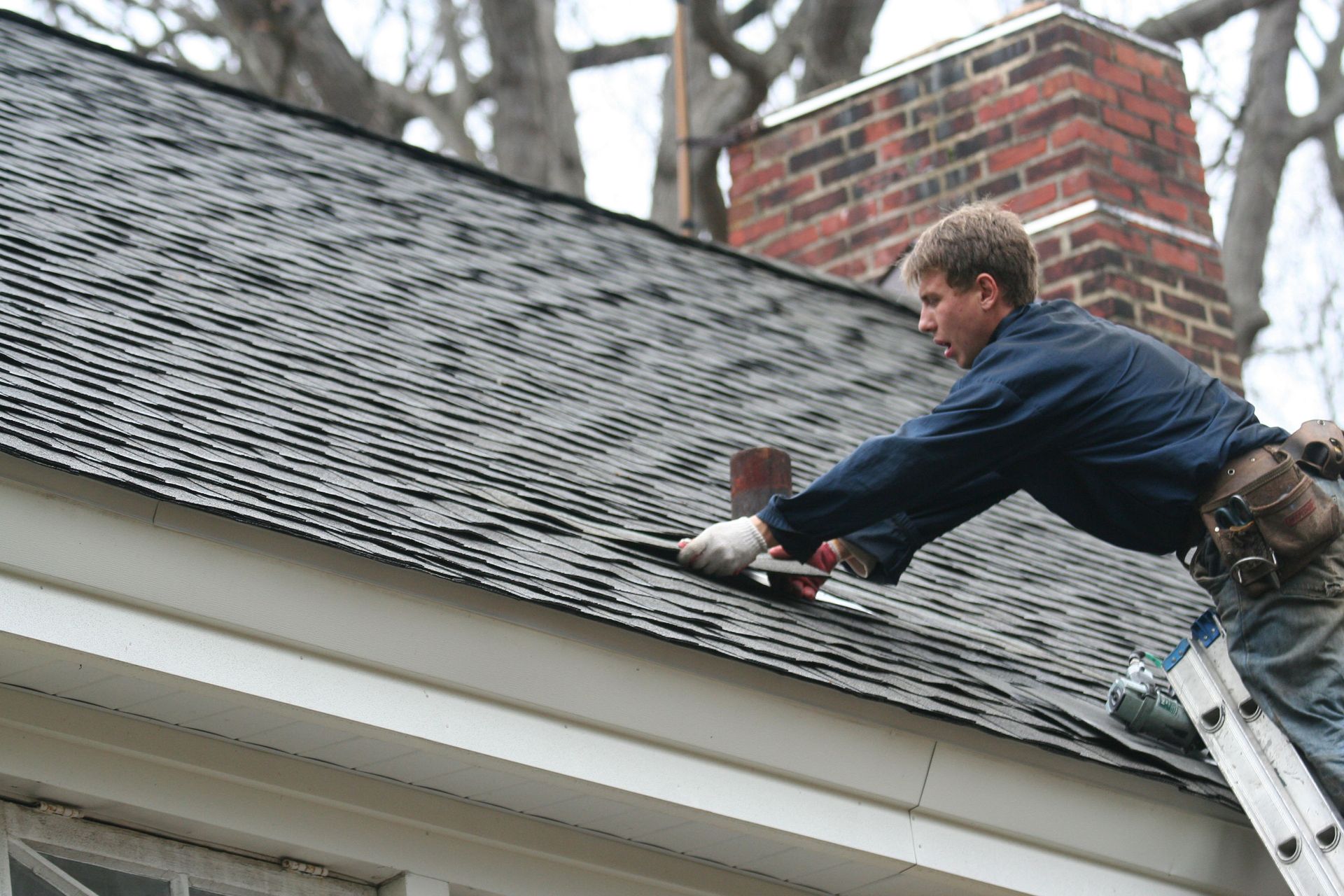7 Reasons Why You Should Never Delay Roof Repair
A roof is one of the most important parts of any home—it protects your family, belongings, and the structural integrity of your property from the elements. According to This Old House , the average roof in the U.S. is 1,700 square feet, or 17 squares. That’s a lot of surface area exposed to harsh weather conditions, UV rays, and debris year-round. Because your roof plays such a critical role, staying alert to the early warning signs is key to protecting your investment. Let's take a look at a few common indicators that it might be time to call a roofing professional for an inspection and potential repairs.
1. Missing or Damaged Shingles
One of the most visible signs that you may need roof repair is missing or damaged shingles. Shingles serve as the first line of defense against rain, snow, and wind. Over time, they can curl, crack, or completely detach due to weather exposure or aging materials.
If you notice bald spots on your roof where shingles are missing—or find pieces of shingles in your yard—it’s a red flag. Damaged shingles can allow moisture to penetrate the underlayment and decking, leading to leaks or rot. Even a few missing shingles can compromise the roof’s ability to shed water properly, so it’s best not to delay repairs. A roofing professional can replace damaged sections before the issue spreads, helping you avoid more extensive (and expensive) work later.
In addition to visible damage, homeowners should also pay attention to color inconsistencies or uneven surfaces on the roof. These subtle signs may indicate that some shingles are loosening or beginning to deteriorate beneath the surface. Wind and storms often lift shingles slightly, breaking the seal that keeps them watertight. If left unrepaired, this small separation can lead to water infiltration during heavy rain. A timely roof repair can restore those protective seals, keeping the roof’s structure strong and preventing further deterioration.
2. Leaks or Water Stains on Ceilings
Water stains on your ceiling or walls are an unmistakable sign that something’s wrong above. These stains often appear as brown or yellowish discoloration and indicate that water has already breached your roofing system.
Leaks can result from cracked flashing, damaged shingles, or deteriorated sealant around vents and chimneys. Sometimes, the source of the leak is far from where the water actually appears inside your home. That’s why identifying the root cause requires a thorough inspection by a roofing specialist. If not addressed promptly, even minor leaks can lead to insulation damage, mold growth, and compromised structural components—making timely roof repair essential.
3. Sagging Roof Deck
A sagging roof deck is a serious issue that requires immediate attention. When the roofline appears uneven or dips inward, it’s often a sign of trapped moisture, rotting wood, or failing structural supports.
This type of damage can develop gradually, especially in older roofs or those exposed to prolonged water infiltration. If you spot sagging or a visible dip in your roof, don’t ignore it. The longer the problem persists, the more likely it is that water will continue to accumulate, worsening the damage. A professional roof repair team can assess whether the sagging is confined to one area or if it indicates a more widespread structural concern that requires partial or full replacement.
Homeowners should also be aware that sagging isn’t always caused by visible leaks—it can stem from hidden water damage, excessive weight from snow or debris, or improper installation during the roof’s original construction. Even subtle dips in the roof surface can signal underlying weaknesses in the decking or trusses. Addressing the issue promptly through inspection and roof repair not only prevents further sagging but also helps maintain the structural integrity and safety of the entire home.
4. Granules in Gutters or Downspouts
As asphalt shingles age, they begin to shed the small protective granules that help reflect sunlight and protect the roof from UV damage. If you start noticing black, sand-like granules in your gutters or at the base of your downspouts, it’s a sign your shingles are deteriorating.
Granule loss leaves the underlying asphalt exposed, accelerating wear and increasing the risk of cracking and water absorption. While some granule loss is normal, excessive shedding indicates that your roof may be nearing the end of its service life or has suffered storm-related damage. Having a roofing contractor inspect the extent of granule loss can determine whether targeted roof repair or a more extensive replacement is necessary.
5. Mold, Moss, or Algae Growth
While moss and algae might seem harmless, their presence on your roof can actually signal moisture retention and possible damage beneath the surface. Moss tends to hold water, and over time, that trapped moisture can cause shingles to lift or deteriorate.
Algae, on the other hand, may leave dark streaks across your roof, which can affect its aesthetic and heat-absorbing properties. Mold growth, particularly in attic spaces, is an even more serious concern—it often indicates ongoing leaks or inadequate ventilation. Regular cleaning and professional maintenance can help prevent these issues. But if growth has already taken hold, you’ll likely need roof repair to address both the surface problem and any underlying moisture intrusion.
It’s also important to recognize that persistent moisture, encouraging mold, moss, or algae, can accelerate shingle wear and compromise the roof’s lifespan. Areas that are shaded or receive limited sunlight are particularly prone to growth, and ignoring these spots can allow damage to spread to larger sections of the roof. Early intervention, including targeted cleaning and roof repair, helps protect your home’s exterior and prevents costly structural or water damage over time.
6. Damaged Flashing and Roof Valleys
Flashing refers to the thin pieces of metal installed around chimneys, vents, skylights, and roof intersections to prevent water from seeping into joints and seams. When flashing becomes rusted, cracked, or detached, water can easily penetrate these vulnerable areas.
Roof valleys—where two slopes meet—are particularly susceptible to leaks, as they channel a large amount of rainwater. Damaged flashing or improperly sealed valleys can quickly lead to interior water damage. During a professional inspection, a roofer can check these high-risk zones and make necessary roof repairs, such as resealing or replacing flashing to restore watertight protection.
7. Rising Energy Bills
If you’ve noticed a steady increase in your heating or cooling costs without any major changes in household usage, your roof could be the culprit. A damaged or aging roof can allow conditioned air to escape and outdoor temperatures to infiltrate your home, forcing your HVAC system to work harder.
Worn shingles, poor insulation, or compromised ventilation can all reduce your roof’s efficiency. By addressing leaks and damaged areas promptly, you can improve energy efficiency and reduce monthly utility expenses. Investing in professional roof repair not only helps restore comfort but can also extend the overall life of your roof by preventing further deterioration.
Your roof quietly works year after year to protect your home, but it’s not invincible. Knowing the warning signs of potential damage can help you take action before a small issue becomes a major expense. Whether it’s missing shingles, leaks, sagging, or energy inefficiency, each symptom is your roof’s way of calling for attention. If you notice these signs, reach out to R E Kuba Construction Inc today to get started with a free estimate!




Share On: